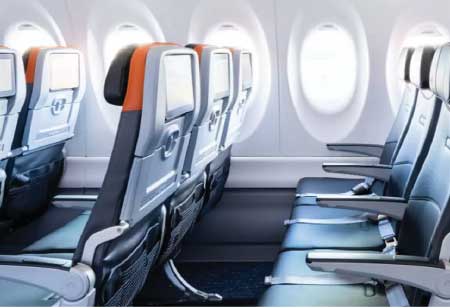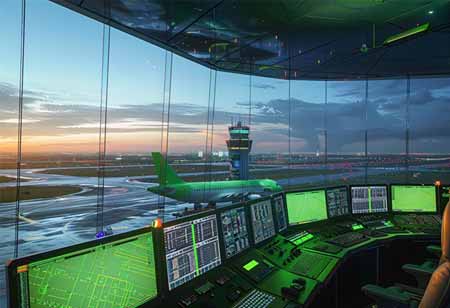The aviation industry is implementing sustainable practices, including recyclable materials, lightweight fabrics, bio-based materials, and recycled metals, fostering collaboration among airlines, manufacturers, suppliers, and researchers.
FREMONT CA: The aviation industry, integral to global connectivity, faces significant challenges related to its environmental footprint. As awareness of carbon emissions grows, the sector is increasingly pressured to adopt sustainable practices. Adopting eco-friendly materials for aircraft interiors is a promising approach to mitigate aviation’s environmental impact.
The Imperative for Sustainable Aircraft Interiors
Aircraft interiors are typically refreshed every 4-5 years, resulting in considerable waste. Traditional materials in these interiors often carry high environmental costs throughout their lifecycle—from extraction and processing to eventual disposal. By integrating sustainable materials, airlines can meaningfully reduce their carbon footprint while enhancing their commitment to environmental stewardship.
Essential sEssentialainable materials reshape aircraft interiors, emphasising reduced environmental impact without compromising quality. Recycled composites, for instance, present a lightweight, eco-friendly alternative to traditional materials like aluminium and titanium, decreasing aircraft weight and fuel consumption and emissions. These composites are versatile and suitable for seat frames, overhead bins, and aircraft structural sections. Similarly, lightweight fabrics—such as recycled polyester and organic cotton—contribute to weight reduction while enhancing comfort and durability, making them ideal for seat covers, curtains, and carpets. Bio-based materials from renewable plant-based sources offer an alternative to petroleum-derived materials and can be used for seat cushions, rugs, and insulation, further minimising the carbon footprint. Additionally, recycled metals, including aluminium and titanium, reduce the need for virgin material extraction and effectively serve in structural and seating components. Together, these materials underscore a commitment to sustainability within the aerospace industry, balancing eco-responsibility with functionality.
While emphasising sustainable materials is integral, a comprehensive approach to aircraft interior sustainability is essential for achieving meaningful advancements. Beyond material selection, several factors must be considered to enhance environmental stewardship within the aviation industry. A key aspect is Lifecycle Assessment (LCA), which provides an in-depth analysis of a product's environmental impact, from raw material extraction to end-of-life disposal. By conducting LCAs, manufacturers can identify areas for improvement, enabling more sustainable design choices that reduce the overall environmental footprint of aircraft interiors. Additionally, integrating circular economy principles—such as designing products for longevity, recyclability, and reusability—can play a significant role. In aircraft interiors, this approach can involve modular designs, ease of disassembly, and recyclable materials, all of which facilitate reuse and reduce waste. Sustainable manufacturing processes, such as minimising energy consumption, reducing waste, and using eco-friendly solvents, further reduce the environmental impact of production. Innovative technologies like 3D printing allow for the creation of customised, lightweight, and intricate components with minimal material waste, leading to significant weight reduction and a smaller ecological footprint.
Furthermore, using innovative materials, such as self-healing compounds and shape-memory alloys, enhances the durability and longevity of aircraft interiors, reducing the need for frequent repairs or replacements. Biomimicry offers innovative solutions inspired by nature, such as more efficient air conditioning systems or noise-reducing materials, aligning performance with environmental sustainability. Together, these strategies form a multi-faceted approach essential for advancing aircraft interior sustainability in line with global environmental goals.
Consumer Awareness and Demand
As consumer awareness of environmental issues grows, demand for sustainable products and services increases. Airlines can capitalise on this trend by promoting sustainability initiatives, such as incorporating eco-friendly materials into aircraft interiors. By offering greener travel options, airlines can attract environmentally conscious consumers and stand out from competitors.
Collaboration and Partnerships
Collaboration among airlines, manufacturers, suppliers, and researchers is essential to driving innovation and accelerating the adoption of sustainable practices in aviation. Industry stakeholders can develop and implement sustainable solutions for aircraft interiors through shared knowledge and resources.
Integrating sustainable materials and practices into aircraft interiors is both an environmental necessity and a strategic step toward fostering a responsible and resilient aviation industry. The sector can reduce its carbon footprint by adopting innovative materials, efficient manufacturing techniques, and circular economy principles, contributing to a more sustainable future. With technological advancements and growing consumer awareness, the potential for sustainable aircraft interiors is vast. Prioritising sustainability enables the aviation industry to achieve a balanced alignment between economic growth and environmental stewardship.









